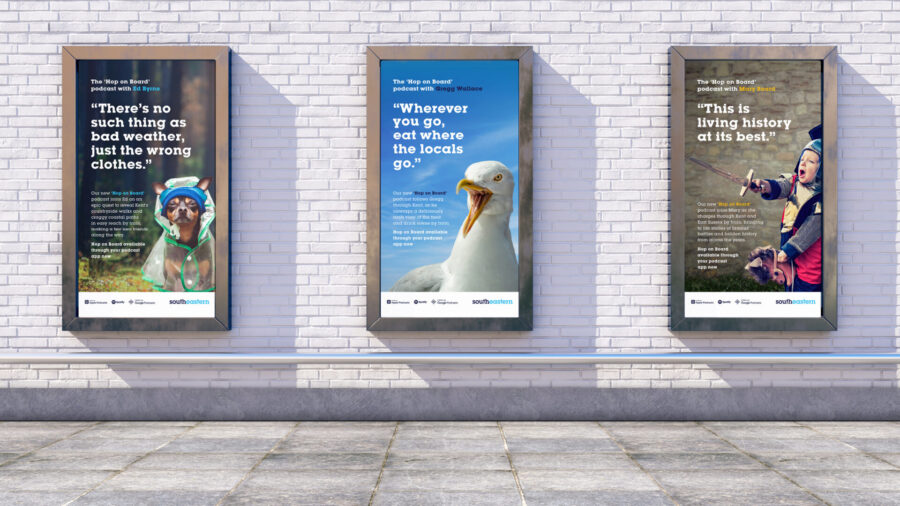
Secure savings accounts, safe gas engineers, trains people want to travel on.
They’re all things we just expect and hope to happen. We don’t pay them any attention – until they’re not there or they go awry. And then we realise how much they, and the countless other unsung heroes of our daily lives, matter to us.
It’s the core challenge facing the leaders of those brands. They need people to recognise the vital and complex work they do – government funding, connecting people and places, safe and healthy living conditions all depend on it. But it’s incredibly hard to get people’s attention – we’re much more interested in the nice stuff like trainers, fizzy drinks and reality TV.
The internet is full of advice, opinions and success stories on the marketing of exciting consumer products like those, but it’s almost impossible to find any guidance on how to get attention for and engage people with these vital but often invisible brands.
For anyone figuring out how to do this, here are three approaches that have worked well for us over the years.
Basic human needs
Begin with two simple questions: what is the basic human need the brand serves? Where does it fit into people’s lives? Starting with this deep psychological understanding of your audiences immediately elevates you from the everyday activities to a level which is more fundamental, often simpler and almost always far more relatable.
John Lewis is a famous example of how to do this well. On one level it’s a retailer in a highly competitive market that becomes even more so at Christmas. Its Christmas ads show us moments that are everyday and relatable and which take us to a deeper level, blending emotional storytelling with behavioural insight into what Christmas gifting means to people. Not only have the ads created consumer loyalty and brand affection, they have also become highly anticipated cultural touchpoints.

Gas Safe is an industry standard and a registry of qualified gas engineers. There’s a very clear reason why that matters: to keep everyone safe in their homes. With a campaign that leads with the word ‘safe’ across a range of images centred on diverse home and family scenarios, we’ve helped people see the link between the work of Gas Safe and that deep psychological need.
Equally, NS&I saving provides the safest way possible for people to have a rainy-day pot or to follow their dreams and we’ve helped them create an energising brand and digital experience that inspires everyone to save confidently.
B&Q is another good example. It’s a store many associate with chores and weekends spent fixing things and so could occupy a functional, often-overlooked space in British culture. But with its 2020 “Build a Life” campaign, the brand moved beyond selling drills and paint to telling deeply human stories about progress, pride and possibility.
From transaction to inspiration
It’s hard to get attention for brands that are invisible or just part of our everyday lives. Branded content is an effective way help draw attention, elevating these brands from the transactional and sparking engagement.
When Southeastern was looking for ways to move the brand beyond transactional transport, we helped it create its own podcast. From rambling with Ed Byrne as he hikes through beautiful countryside, to joining Mary Beard as she explores the rich and varied history and heritage of Kent and East Sussex, it gives people ideas for days out and things to do across the network. It inspires Southeastern’s customers and gently showcases the rail company’s role in making the fun happen.
Disrupt positively
With brands that people expect to be more cautious there is an interesting opportunity for positive disruption. It could be an unexpected form of entertainment, leveraging patterns our brains find pleasurable, such as rhyme and alliteration. Or perhaps positively provoking or questioning the audience in some way.
TfL’s advocacy spots such as “Travel Kind” are nice examples of soft behavioural disruption in action. Instead of rules or reprimands, they use rhyme, story cadence and social nudges to reinforce empathy among commuters. This reflects an everyday yet mature social brand –one that interrupts routine indifference to remind Londoners they co-create a shared space.
The power of stability
While there is much they can do to gain attention, and there is clear value in doing so, these unsung heroes of everyday life should remember that in a world that seems ever more turbulent there is great power in stability and consistency. We might take them for granted, but we know they’re the brands we can’t live without.
Sally Tarbit is a partner at The Team, a brand consultancy

Secure savings accounts, safe gas engineers, trains people want to travel on.
They’re all things we just expect and hope to happen. We don’t pay them any attention – until they’re not there or they go awry. And then we realise how much they, and the countless other unsung heroes of our daily lives, matter to us.
It’s the core challenge facing the leaders of those brands. They need people to recognise the vital and complex work they do – government funding, connecting people and places, safe and healthy living conditions all depend on it. But it’s incredibly hard to get people’s attention – we’re much more interested in the nice stuff like trainers, fizzy drinks and reality TV.





